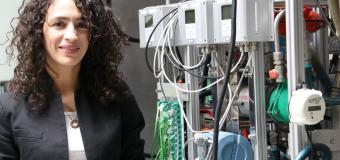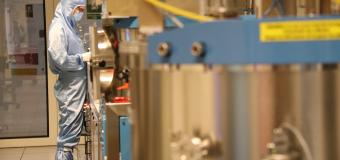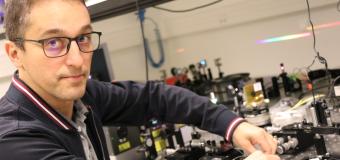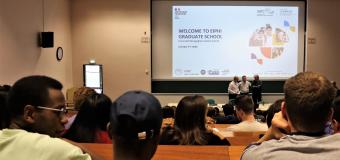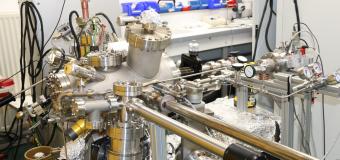A new source of infrared light thanks to fibre optic cascades
Scientists from FEMTO-ST Institute and McGill University (Montreal, Canada) have designed and developed in collaboration with three French companies a light source covering the entire mid-infrared wavelength range: from 2 to 10 µm. This work, which is published in Laser and Photonics Reviews , opens up applications in spectrometry and biomedical imaging.
Fiber-based supercontinuum1 (SC) light sources have become enormously useful in the last decade for a wide range of industrial and scientific applications. New uses are constantly emerging due to their unique optical properties that combine high brightness, multi-octave frequency bandwidth, inherently fiber delivery and single-mode output. Applications include optical coherence tomography (OCT), material processing, chemical sensing, gas monitoring, broadband imaging, and absorption spectroscopy. State-of-the-art SC lasers are based on silica-glass microstructured optical fibers, providing watts of output power over the bandwidth 0.4-2 µm. However, many applications such as detection of chemical and biological species would benefit from extending the SC spectrum beyond the state-of-the-art, in particular towards the mid-infrared (IR) range. This currently motivates significant research effort focused on extending the wavelength coverage towards the 2 to 20 µm molecular fingerprint region.
Various infrared soft glasses based on chalcogenide, tellurite, telluride, heavy-metal oxide and fluoride have been used for drawing highly nonlinear fibers for the mid-infrared, and experiments have shown efficient mid-IR SC generation up to 14 µm in chalcogenide optical fibers and up to 16 µm in telluride fibers. However, most of these mid-IR SC sources have been demonstrated using bulky and expensive mid-IR pump sources such as optical parametric oscillators and amplifiers, making them impractical for most abovementioned applications.
Now writing in Laser and Photonics Reviews, S. Venck and coworkers (SelenOptics) report a compact all-fiber cascaded system which provides a supercontinuum emission spanning the entire 2-10 µm mid-infrared range, thus offering a new reliable laser solution for molecular spectroscopy, remote sensing, optical coherence tomography, and hyperspectral imaging. To get this broad continuous spectrum, they developed a more practical and elegant solution based on a cascaded silica-fluoride-chalcogenide fiber system directly pumped by a compact pulsed fiber laser at a wavelength of 1.55 µm. The initial laser spectrum was progressively broadened and redshifted in the three cascaded fibers through nonlinear optical effects, enabling a stepwise extension towards the mid-infrared. This all-fiber system was shown to generate a nearly flat broadband mid-infrared continuous spectrum from 2 µm to 10 µm (See Figure 1), the upper transmission limit of the chalcogenide fiber, with several tens of milliwatts of output power.
T.Sylvestre (FEMTO-ST), who managed the project with SelenOptics, says argues:“This simple technique paves the way for low cost, practical, and robust broadband sources for mid-IR sensing and spectroscopy. Nothing expect the synchrotron radiation can give wider bandwidth”. The authors further describe in their paper a fully-realistic numerical model used to design the fibers and to simulate the nonlinear pulse propagation through the cascaded fiber system and they use numerical results to discuss and optimize the physical processes underlying the spectral broadening in the cascaded system. The teams concur that their mid-infrared supercontinuum source is now ready for commercialization and they are working on ways forward.
This work involves researchers from the FEMTO-ST institute, The McGill University in Montréal (Canada) and three French companies ( SelenOptics, Le Verre Fluoré, Leukos) and is the result of a European H2020 Marie-Curie ITN project under grant agreement 722328, managed by CNRS.
https://doi.org/10.1002/lpor.202000011
Contact : Thibaut Sylvestre


